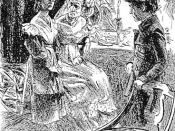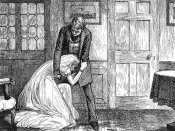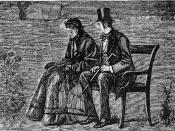Do Estella and Miss Havisham present an antithetical example of Victorian femininity? OR are these characters and others actually indicative of the feminine plight in the 19th Century English societal setting?
"Great Expectations" By Charles Dickens is based around the transformation development of the main character, Pip, from a child into a man, a blacksmith into a gentleman, from lower-class to higher-class. "Great Expectations" is one of his novels that has been greatly influenced by his interesting life in the Victorian era.
Dickens uses a variety of female characters which are closely related to Victorian femininity. Characters such as Estella, Miss Havisham and Mrs Joe all present an antithetical example of Victorian femininity due to their roles in society, feelings and dominance over men. However, Biddy (and to a slight extent the male character Joe) is actually indicative of Victorian femininity, fulfilling the typical role of Victorian females of providing for and supporting the family.
Men and women in the nineteenth century each had individual, but complementary, functions to perform in society. Victorian middle class women's main role was to bear children and raise and support for their family. In addition to this, they organized and maintained the household, doing tasks such as caring for the children, sewing, cooking, and cleaning. Males earned the money to purchase goods needed for the households while the females acted as "housewives" organizing and doing basic jobs, as well as providing comfort, moral and religious support for their husbands. The perception that the home provided a moral centre and a place of comfort for the husband was largely popular with the working-class family. Dickens, like many Victorians, imagined men and women as having different, yet complementary roles.
In "Great Expectations", Charles Dickens depicts men and women as existing within different social spaces. The majority...


